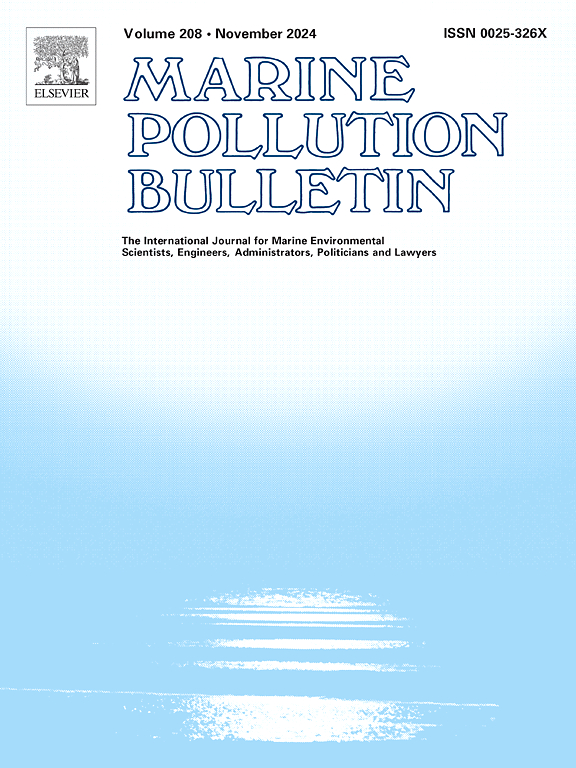Vertical migration characteristics of polychlorinated biphenyls (PCBs) in estuarine and coastal zones under complex environmental conditions
IF 5.3
3区 环境科学与生态学
Q1 ENVIRONMENTAL SCIENCES
引用次数: 0
Abstract
As a transitional zone where rivers meet the sea, estuaries are influenced by river transport and ocean tides, resulting in complex variations in parameters such as organic matter content, pH, and sediment salinity. This paper primarily explores the vertical migration patterns of polychlorinated biphenyls (PCBs) under complex conditions, focusing on the soil sediments in the Dagu River estuary area. We designed an indoor soil column leaching experiment to investigate how soil organic matter content, pH, and salinity affect the vertical migration of PCBs in soil. The results indicate that PCBs predominantly migrate within the 0–6 cm depth range in the sediment of various organic-rich soils. In soils with low organic matter, there is higher downward migration of PCBs compared to soils with high organic matter content. Variations in organic matter significantly influence the migration behavior of different PCBs congeners, with highly chlorinated congeners showing a greater tendency for downward migration. Furthermore, both pH and salinity levels influence the migration of PCBs. Alkaline conditions enhance PCBs migration in soil, whereas acidic conditions impede it. Additionally, optimal salinity levels increase the migration depth of PCBs.复杂环境条件下河口海岸带多氯联苯垂直迁移特征
河口作为河流与海洋交汇的过渡地带,受河流输送和海洋潮汐的影响,有机物含量、 pH 值和沉积物盐度等参数变化复杂。本文主要以大沽河口地区的土壤沉积物为研究对象,探讨多氯联苯(PCBs)在复杂条件下的垂直迁移模式。我们设计了一个室内土壤柱浸出实验,研究土壤有机质含量、pH 值和盐度如何影响多氯联苯在土壤中的垂直迁移。结果表明,在各种富含有机质的土壤中,多氯联苯主要在沉积物中 0-6 厘米的深度范围内迁移。与有机质含量高的土壤相比,有机质含量低的土壤中多氯联苯的向下迁移量更高。有机物的变化对不同多氯联苯同系物的迁移行为有很大影响,高氯化同系物更倾向于向下迁移。此外,pH 值和盐度也会影响多氯联苯的迁移。碱性条件会促进多氯联苯在土壤中的迁移,而酸性条件则会阻碍多氯联苯的迁移。此外,最佳盐度水平会增加多氯联苯的迁移深度。
本文章由计算机程序翻译,如有差异,请以英文原文为准。
求助全文
约1分钟内获得全文
求助全文
来源期刊

Marine pollution bulletin
环境科学-海洋与淡水生物学
CiteScore
10.20
自引率
15.50%
发文量
1077
审稿时长
68 days
期刊介绍:
Marine Pollution Bulletin is concerned with the rational use of maritime and marine resources in estuaries, the seas and oceans, as well as with documenting marine pollution and introducing new forms of measurement and analysis. A wide range of topics are discussed as news, comment, reviews and research reports, not only on effluent disposal and pollution control, but also on the management, economic aspects and protection of the marine environment in general.
 求助内容:
求助内容: 应助结果提醒方式:
应助结果提醒方式:


